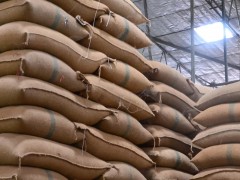This week’s series on legal structures for farmers markets was contributed by Erin Kee, Esq. Erin is an Agricultural and Food Law LL.M. candidate at the University of Arkansas School of Law. Erin graduated from the University of South Carolina Law School where she studied environmental and agricultural law. She has worked at the South Carolina Department of Agriculture where she focused on developing a sustainable food system for South Carolina. She has also worked at Rural Vermont, a farm advocacy organization, representing the interests of family farms and rural communities. Erin is passionate about eating locally, trying new recipes, and pickling okra.
Farmers markets are gaining influence as effective business models for the local food movement. The number of markets is steadily growing in the United States as more people become personally invested in the process of getting food from the farm to their plate. The number of markets in the US has doubled in the last ten years from 3,137 markets in 2002 to 7,864 markets this year. They’ve become popular with customers for a variety of social and economic reasons. A market allows the customer to interact with the farmer and develop a valuable and increasingly relevant personal relationship. When shopping from a market the customer begins to know who has the best squash and zucchini and which farmers will allow you to sample the goods before you buy. These relationships also provide opportunities to visit the farm and get a firsthand look at the amount of labor required to produce a crop. Buying directly from the farmer means that the customer has access to fresh, seasonal produce and the ability to ask questions and understand how their vegetables are grown and their meat produced. Finally, people enjoy the community aspect; visiting the market allows them to catch up with friends and neighbors that they might not normally get to see during the busy workweek. All of these attributes amount to an increasing desire for people to forge a deeper connection with their food and with the people that make it.
This trend towards greater intimacy with agriculture shows no sign of abating, and is an excellent reason for farmers to organize even more markets in the future. Farmers markets are the ideal way to deliver both the good food and the emotional satisfaction consumers get when the form stronger bonds with the agricultural community. This week’s series will talk about the different legal structures that farmers and market organizers can use to regulate the relationships and obligations related to operating a farmer’s market.
To frame this week’s discussion, it is best to think about what the purpose of a market structure is in the first place. Think of a farmers market as a business. As a distinct entity, a farmers market creates economic opportunities and efficiencies that very few individual farmers could afford to provide on their own. Market organizers assume a duty to provide farmers with direct access to a specific type of conscientious consumer, increase farm revenue by eliminating packing and shipping costs, create customer loyalty and community engagement in agriculture, and are responsible for conducting all the logistics of setting up the market space, permitting, and parking issues which allow customers to enjoy their shopping experience.
Thus, there are also objective criteria by which a market operator can be judged. A market can only justify its expense if it performs well, by drawing customers, facilitating city permits, or by performing public relations and marketing functions on behalf of its farmer members.
All of these attributes of farmers markets add value to any farming operation if performed diligently. They also confer a series of obligations onto market management – time, money, effort, and stress must be expended in order to set up and run a market of any size. There are a variety of legal structures that market organizers can use to both create value for farmers and execute the duties of organization.
This series discusses the different legal structures that market organizers can use to create well-run markets and to deliver services to farmers in efficient ways. Over the next week I will discuss three legal arrangements designed to increase the value of farmers markets. Tomorrow, I’ll be going in-depth on the non-profit structure used by most markets in the United States, an economical and financially equitable means to deliver markets services to the agricultural community.
–by Erin Kee















